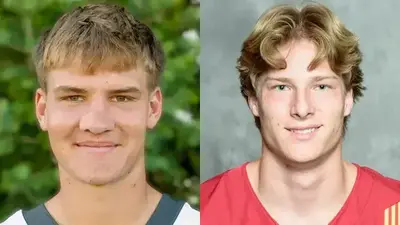This summer, Dordt University students and faculty will engage in a variety of undergraduate research projects. There are eight separate research opportunities involving nine faculty members and 15 undergraduate students. The research is supported by the Kielstra Center for Research and Grants, a multidisciplinary research and scholarship incubator that seeks to expand faculty and student perspectives and competencies across disciplines.
“Undergraduate research offers students the opportunity to explore interesting questions within their field of study and develop skills to help them address those questions – to extend learning that happens within their class work,” says Angela Kroeze Visser, director of the Kielstra Center for Research and Grants. “Faculty mentors are central to the process of undergraduate research; they provide guidance for the students’ work and propose projects that relate to their own research or scholarly interests. At its best, undergraduate research is a rewarding enterprise for both students and faculty mentors.”
Here is a look at the research opportunities taking place on Dordt’s campus this summer:
Encountering the Land Curriculum Development
Mentor: Dr. Gayle Doornbos – Theology
Research Student: Joya Schreurs
This project involves researching and developing the curriculum for a study trip to Israel for Dordt students. This will include the development of a syllabus and schedule for the trip as well as doing biblical exegesis and geographical research related to trip locations.
Completing Translation and Editing of Worldview Booklet into English
Mentor: Dr. Jay Shim – Theology
Research Students: Hannah Vanderhooft & Kara Jasper
Dr. Shim has published a Christian faith and worldview book for elementary school students in Korea. The school has requested that this book be translated into English so that it may be used at schools in the mission field. This project will give students the opportunity to a) research and summarize Reformed faith and worldview in their own words, mainly by way of reading and criticizing CORE 150 and 200 materials. They will b) read through a rough translation of the children’s text and take part in editing it. They will also c) polish the text so it can be ready to publish.
Molecular Insights into an Inherited Neurological Disorder
Mentor: Dr. Manuela A.A. Ayee – Engineering
Research Students: Lucas Lopes & Erin Holmberg
Charcot Marie Tooth disease is a progressive disorder that affects the mobility and strength of the lower legs and feet. There are several forms of this disease, which differ depending on the type of point mutations that appear in Myelin Protein Zero (MPZ), the most abundant protein found in the myelin sheath. Still unknown is how exactly MPZ mutations affect protein-protein interactions. This question is important because MPZ is known to oligomerize and form dimers and tetramers within its membrane environment. We will address the question of MPZ chemical interactions using molecular dynamics computer simulations. We have already created computer models of MPZ in its native form and select mutated forms. We will next quantitatively assess the molecular interactions between these model proteins. Specifically, using simulations, we can answer questions such as: what are the points of contact between the proteins; what is the affinity of these interactions, or how strongly do they interact with each other; how does protein concentration affect interaction rates; and how does the protein influence membrane structure and dynamics? The answers to these questions would form part of a larger study that will attempt to understand the biological significance of specific MPZ interactions and mutations.
Raising Awareness of a Genetic Mutation in Persons with a Frisian Background
Mentors: Dr. Tony Jelsma – Biology and Dr. Deb Bomgaars – Nursing
Research Student: Lucy Borkowski
PLN is a genetic mutation found in people of Dutch, particularly Frisian heritage. In the Netherlands, one in 1,200 people from Friesland have been found to carry the mutation. Having the mutation can cause early heart arrhythmias, heart failure, or sudden death. The mutation is present in North America, but identification of carriers has not been emphasized. The purpose of this research is to raise awareness of the mutation by identifying persons who may have the PLN mutation and educating them on how to test for it. The project will involve searching and writing letters to areas where Dutch people have settled, contacting possible PLN carriers, encouraging testing, and maintaining a database of carriers. Qualitative research involving PLN carriers may also be involved.
Building qPCR Primer Sets to Assess Microbiome of Aquatic Environments
Mentor: Dr. Robbin Eppinga – Biology
Research Students: Joel Heynen and Hannah Landman
The contribution of microbial communities to the health of aquaculture systems and natural fisheries is relatively unknown. In this study, two research students will work as a team to use the available literature to design, order, and test PCR primer sets that target microbial species found in aquatic environments such as fisheries, lakes, ponds, hatcheries. Polymerase chain reaction will be performed to validate the primer sets. Once we have a reasonably comprehensive catalog of primer sets, we will perform a comparative analysis of local and regional aquatic environments, assessing the presence of particular microbes using PCR, and determining relative abundance of each species using qPCR. There is an expectation to present the findings within and outside of Dordt.
Chemoenzymatic Synthesis of Glycosylated and Sulfated CCR5 NTerminal Peptide Library
Mentor: Dr. Joshua Zhu -- Chemistry
Research Students: Anna Rediger, Hope Weyrick, Brooke Van Engen, and Lisa Nicholson
The overall goal of this project is to understand the roles of sulfation and glycosylation of CCR5 in the molecular recognition processes of immunology. The activity of CCR5 is involved in immunological responses to different diseases such as cancer progression and HIV virus invasion of the host cell. We are using chemistry tools to explore how are the post-translational modifications are participating the processes of disease progressing, hoping to find any possible ways of treating those diseases. This project is a three-year NIH funded project, so the research activities will be conducted both in summer and academic year. The project is in its early-stage status, in which a lot of biomolecules will be prepared through organic synthesis and biochemistry synthesis so that organic and biochemistry methods will be used for installing the sulfation and glycosylation groups.
*Research information reported in this release was supported by the National Institute of General Medical Sciences (NIGMS) of the National Institutes of Health under award number R15GM144930.
The content is solely the responsibility of the authors and does not necessarily represent the official views of the National Institutes of Health.
Investigating d-dimensional Behavior of Higher-order QCD Vacuum Condensates
Mentor: Dr. Jason Ho – Physics
Research Student: Tong Mu
Quantum Chromodynamics (QCD) is the theory of strong interaction within the Standard Model of particle physics, describing subatomic particles that make up most of the visible matter that we interact with on a daily basis. Classically in physics, we consider a "vacuum" to be a space containing no matter. In quantum mechanics, the vacuum becomes more complicated due to the Heisenberg uncertainty principle. What is classically viewed as a space devoid of matter is now, viewed through a quantum lens, a space with random fluctuations in energy. In quantum mechanics, a vacuum has matter and antimatter spontaneously created and destroyed in small amounts for short instances in time. These complicated vacuum fluctuations are parameterized mathematically through expressions called vacuum expectation values, or condensates. To use QCD to make predictions at low energies, these condensates must be accurately described in an arbitrary number of d spacetime dimensions. Some of these expressions have been calculated in d=4 dimensions but need to be generalized. The student will develop d-dimensional expressions for future calculations in QCD, benchmarking against known results in the scientific literature. They will learn some basic tensor algebra, linear algebra, and Mathematica in its application to quantum field theory. In addition, the student will learn basic concepts in particle physics and QCD, exploring the creational structure of the universe at the smallest scales science can currently describe with precision.
Further Interactions Between Algebra and Graph Theory
Mentor: Dr. Mike Janssen – Mathematics
Research Students: Jocelyn Zonnefeld and Eliza Kautz
This project continues an ongoing investigation of the relationship between discrete mathematics and algebraic structures. Our primary focus will be the finite tropical semiring and various discrete representations of its properties, such as the directed graph, with the aim of clearly describing connections between algebraic properties of the semiring and invariants of the digraph.
Original source can be found here.




 Alerts Sign-up
Alerts Sign-up